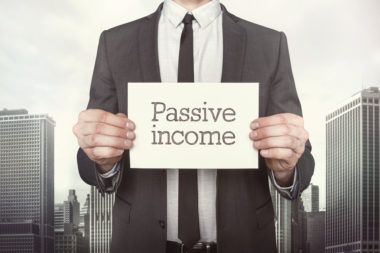Utah Retirement Systems provides retirement and insurance benefits for public employees in the state. This includes state employees, as well as employees of the local government and school districts.
Utah Retirement Systems currently has eight different benefits plans and a variety of different savings plans. They are run by a board whose members are appointed by the governor of Utah. The URS also manages several other types of retirement funds, including a 401(k), 457(b), as well as traditional and Roth IRAs. In most cases, retirement benefits are tied to how much an employee makes during the highest-earning months of their employment.
Table of Contents
Types of Retirement Systems in Utah
In Utah, retirement systems are grouped into two different categories: Tier 1 and Tier 2. These two tiers differ in terms of their eligibility primarily in that recently hired government employees are only eligible for benefits from Tier 2 plans. Tier 2 plans also tend to have less robust benefits packages than Tier 1 plans.
Tier 1 Utah Retirement Systems Plans
Tier 1 applies to workers who were hired before July 1, 2011. Plans that fall under Tier 1 include:
- Public Employees’ Contributory and Noncontributory Retirement Systems — These plans have similar benefits, but differ in terms of who makes the contributions. Under contributory retirement systems, both employees and employers contribute to an employee’s retirement fund. Under noncontributory retirement systems, only the employer contributes to an employee’s retirement fund.
- Public Safety Retirement System — The Public Safety Retirement System provides benefits to people employed in public safety for the State of Utah when they reach retirement. Benefits for the Public Safety Retirement system depend on several factors, including how long you’ve worked, your average salary, and your highest total salary. Employees may also be eligible for additional benefits including health insurance.
- Firefighters’ Retirement System — The Firefighters’ Retirement System is another benefits plan offered by the Utah Retirement System. Like other plans, this plan enables firefighters to access pension payments after they retire. Payments are eligible for cost of living adjustments each year.
- Utah Governors and Legislators Retirement Plan — The Utah Governors and Legislators Retirement Plan provides retirement benefits to employees who have served as governor or as legislators for the state of Utah. This plan also comes with death benefits for the families of employees, even if an employee has not yet reached retirement age. Employees can choose between monthly distributions and a partial lump sum.
- Judges’ Retirement System — The Judges’ Retirement System provides retirement benefits to judges employed by the State of Utah. The program includes health insurance, and takes cost of living increases into consideration throughout retirement.
Tier 2 Utah Retirement Systems Plans
Tier 2 retirement plans provided by the Utah Retirement System mostly apply to employees who were hired on or after July 1, 2011. Plans that fall under Tier 2 include:
- Public Employee Hybrid System and Defined Contribution Plan — The Public Employee Hybrid System and Defined Contribution Plan combines elements of both a traditional pension plan and a 401(k). Under this plan, employers contribute 10% of your pay toward your retirement fund.
- Public Safety and Firefighter Hybrid System and Defined Contribution Plan — The Public Safety and Firefighter Hybrid System and Defined Contribution Plan also combines elements of both a traditional pension and a 401(k). This plan comes with death benefits and a variety of different flexible payout options.
Utah Retirement Taxes
In the State of Utah, you will still have to pay both federal and state income taxes on your retirement income.
State Income Taxes on Utah Retirement Income
In Utah, retirement income is subject to state taxes at a flat rate of 5%, which is one of the lowest rates in the country. Unlike federal income tax, which operates through a system of tax brackets that introduce progressive taxation the more money a taxpayer makes, Utah charges a flat tax regardless of your income.
Federal Income taxes on Utah Retirement Income
Federal income tax is also charged on retirement income in Utah. The federal income tax employs a system of progressive taxation, where individuals are charged at a higher rate the more money they make. In most cases, contributions to a Utah Retirement Systems pension plan are tax-deferred, meaning that taxes are only taken out of them once an individual begins to withdraw funds during retirement.
Financial Health of the Utah System
The Utah Retirement System is in excellent health, and serves over 200,000 members and 470 different public employers. In total, the URS administers eight different pension plans and four different retirement savings plans, for a total of 12 plans. Participating employers include school districts, counties, cities and towns, and more.
Utah Retirement Calculator
The Utah Retirement System offers several calculators that employees can use to estimate their benefits. Using these calculators may be helpful for retirement planning, as it allows employees to determine the approximate amount that they will receive each month from their retirement plan. URS offers calculators to estimate retirement benefits, tax withholding, savings plans values, Social Security, and more.
Retirement Planning Tips
It’s important to start planning for retirement as soon as possible. In many cases, employees are able to start contributing to retirement plans as soon as they enter the workforce. Whether you’re eligible for a state funded pension or an employer-matched 401(k), or even just want to open up an IRA in order to stash away some money for retirement yourself, the sooner you start, the better. To jumpstart the retirement planning process, you should:
- Open a retirement account — Whether you’re eligible for a retirement plan at work or not, it’s a good idea to open a retirement account as soon as you start working full time. You may be eligible for a state pension plan, an employer-sponsored 401(k), or a Roth or traditional IRA. The best retirement plan for you will depend on your employment circumstances and your income.
- Make monthly contributions — Once you have a retirement account set up, you should begin making monthly contributions. While a hundred or two a month may not seem like it’s making much of a difference when it comes to retirement, every contribution adds up over time thanks to the power of cumulative interest. The sooner you begin making regular contributions to a retirement fund, the better. After you build up a personal finance safety net and take care of your basic needs and expenses, you should try to contribute as much to your retirement account as you can.
- Plan ahead — Although retirement may still seem like a long way off, planning ahead will save you a lot of time and money in the long run. Retirement calculators can help you figure out how much you need to save in order to maintain a consistent quality of life during retirement.
- Get help from experts — If you’re not sure what the best route is when it comes to saving for retirement, financial planning professionals can help you make the choices that work best for your particular situation. In some cases, your employer may provide professional counseling when it comes to investing in a retirement savings fund such as a 401(k).
- Decide when you want to retire — For most people, a typical retirement age is somewhere in their mid- to late 60s. That’s when most people become eligible for Social Security benefits and can begin to withdraw funds from retirement accounts. In some cases, however, individuals may want to retire earlier or later. Whether you dream of pursuing early retirement or plan on working past the typical retirement age, getting a good sense of when you want to retire can help you to make financial decisions that make sense for your particular situation.
- Don’t withdraw your funds unless you have to — In most cases, retirement funds operate best under a “set it and forget it” approach. Because you’re investing money over the long haul, temporary ups and downs in your investments shouldn’t be cause for concern. While all the money in your retirement fund still belongs to you, you may face fees and penalties for withdrawing before your reach retirement age. You should only dip into your retirement funds in the case of an extreme emergency.
Once you reach retirement age, it’s a good idea to carefully manage your retirement benefits in order to make them last. To make the most of your savings during retirement, you should:
- Set a budget — Since you might not be bringing in any other income during retirement, you should carefully budget your retirement funds to ensure that you have enough money to live comfortably. A budget can help you determine which expenses are necessary and which are not.
- Consider getting another source of income — It’s very common for many people to work a part-time job after they reach retirement age and stop working full time. A part-time job is not only a welcome source of additional income, but can also help older adults retain a sense of community and maintain a schedule from week to week.
- Decide whether to downsize — In retirement, many people decide to downsize their life to a smaller, more manageable size. This may include moving to a smaller house or apartment and getting rid of possessions that are no longer needed. Downsizing can also help you save money and stretch your retirement savings even further.
Image Source: https://depositphotos.com/





